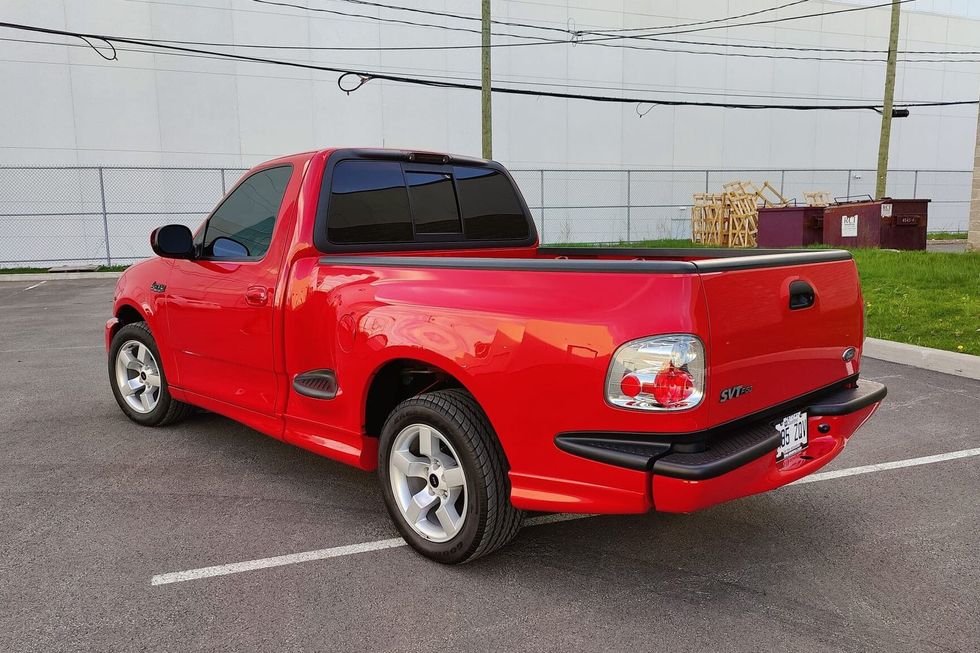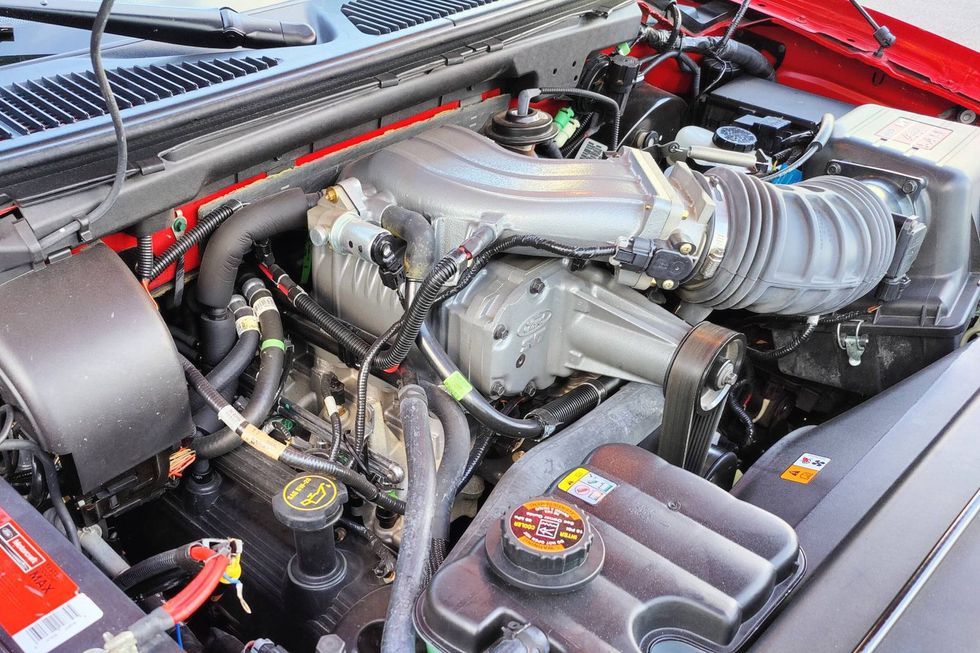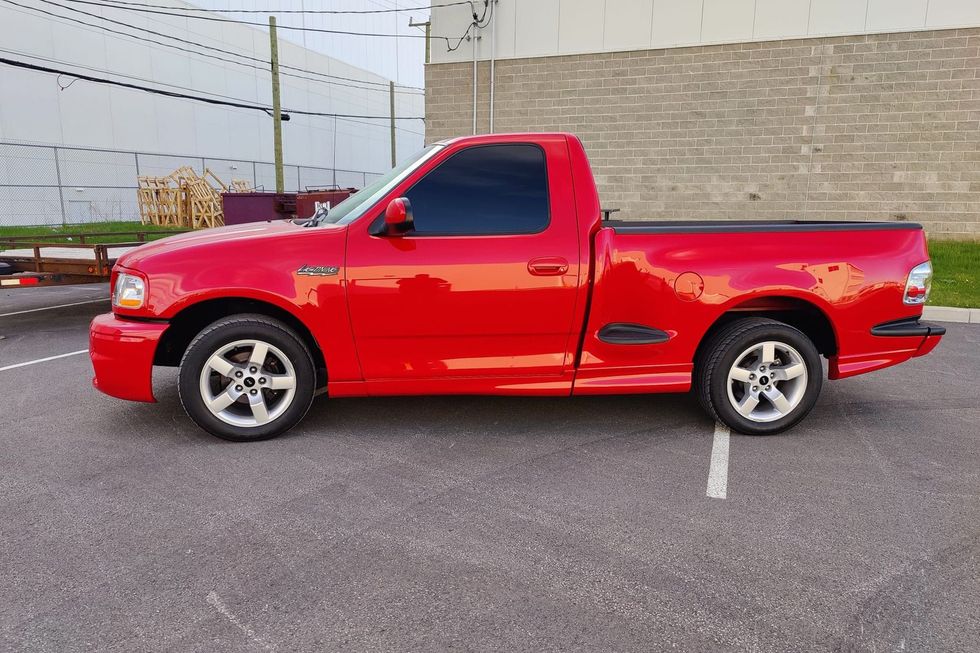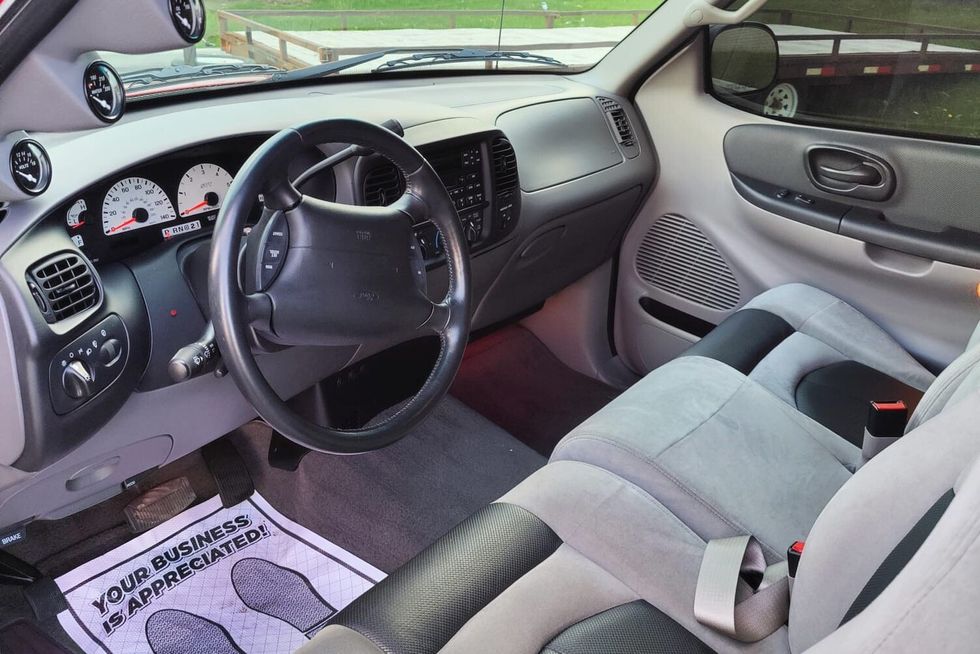This 1931 De Soto SA Coupe is a rolling reminder that hot iron needn’t be based on a cheap Ford
02/12/2020


What you see on these pages is an entirely convincing hypothetical. It's a sort of mental exercise asking "what if?" What if, instead of a Ford, a handy fellow with a bug for speed had gotten ahold of a '31 De Soto business coupe back before the war and decided to give it the hot-iron treatment? What if Chrysler Corporation had decided to build a sport coupe worthy of the name?
Peter Hendrickson, of Paso Robles, California, is better known to many as "Pedro" of the Montana Dodge Boys (he's recently escaped those wintery climes for the Golden State). His credentials as a Mopar (and Dodge Brothers) enthusiast are unmatched, and he's owned and been associated with probably the coolest bits of Highland Park and Hamtramck history you could think up. He's got a soft spot for the early stuff, too. Back before Mopar meant Hemis and 'Cudas, when it was all about the engineering.
As you might imagine, a guy who was part of the team that sent a 1928 Dodge Brothers Fast Four to 150.141 mph on the Bonneville Salt Flats (see Hemmings Muscle Machines, August 2016) was not going to be found building your typical '30s Ford-plus-Chevy-engine street rod. When he came across this '31 De Soto as an abandoned resto, you can bet the wheels in his head started turning.
Having an appreciation for stock early Mopars, Peter was in no hurry to toss away things like the fenders or the parallel spring suspension. Instead, he took a subtle route. Although it's not entirely done in these photos (hot rods rarely are), you can see that the phantom theme predominates.
"The goal was always to keep people wondering what it is and if it's stock or not," Peter said.
To that end, the first step was a very restrained top chop. Unlike General Motors in this era, Chrysler had already embraced all-steel construction, something that made the job easier than it might have been in a wood-framed car.
Overall, the height of the roof was reduced by 2.5 inches, but the rear window was chopped only 1 inch and then re-centered "to avoid the mail-slot look." The result is something very akin to a period custom body as one might have found atop an Imperial chassis. It looks stock but…better.
Likewise, the color is something that might have come off the 1931 De Soto color chart. It's a touch darker, though, than the "Standard Blue Deep" (with black moldings and "Packard Ivory" stripe) that came on the six-cylinder business coupe. Peter calls it "Federal Blue."
"I have always liked Ford Washington Blue," he says, "But I couldn't bear to have a Ford color on the car, so I modified it."
The molding colors and striping were omitted, but the black running boards and splash aprons give an appropriately early '30s look to the car. As did retaining the 19-inch wire wheels. The original tires were 5.00-19, and it now wears 5.50-19 Stahl Sport Radials up front and 7.00-19s in the back.
Looking at those tires and how well they fill up the wheel wells, you might assume this car has some major suspension work to get it sitting so nicely. It really hasn't. The '31 De Soto frame and axles are largely unaltered. The factory double-drop frame means no radical modifications were needed to get the car low.
The biggest modification performed was machining the original front axle to accept Ford Model A kingpins and spindles—a change made to use self-energizing Lincoln Zephyr 12 x 2-inch brakes on the front instead of the Lockheed-design hydraulics used originally. The factory brakes were retained in the rear—a setup very common on traditional-style Ford hot rods. Eventually, Peter says, the original rear axle and brakes will give way to a Winters quick-change and another pair of Zephyr brakes.
What invariably gets the most attention, however, is the engine. The De Soto six-cylinder that came out in 1929 is a direct ancestor of the flathead six-cylinders still being used in Dodge trucks in 1960. That means it took little effort to swap in a 1948 Dodge 230-cu.in. engine to replace the original 72-hp, 205-cu.in. unit.
The '48 engine was originally rated at 102 hp, but Peter estimates it now produces "about 160 hp." The increase is attributable almost exclusively to external modifications. The innards remain largely stock, for now.
"When it's time for a new motor," Peter says, "I'll incorporate all the fancy stuff like CP forged pistons, ARP studs, weight-matched rods, etcetera."
Forged pistons because this is a supercharged engine and has a lot of potential as yet unrealized. The blower wears custom pulleys and a belt tensioner. It puts out about three pounds of boost, but Peter assures us "it will increase if I ever do new engine internals."
Originally, the compressed air entered the engine through three "heavily modified" Stromberg 97 two-barrel carburetors, but, Peter says "I drive it nearly every day," and in a quest for more flexibility than carburetors could provide, he cast a new intake and adapted Holley Sniper electronic fuel injection— taking care to hide all the wiring so as not to spoil the period effect.
While normally the Kaiser-branded, McCulloch-built VS-57 centrifugal supercharger would be the star of the underhood show, it's the Edgy F-head that really takes center stage.
An F-head, also known as intake-over-exhaust, retains the block-mounted exhaust valves of the original flathead design but moves the intake valves into the head itself, permitting larger valves and better flow. The Edgy unit is an exotic piece designed and built by Earl "Edgy" Edgerton of Santa Rosa, California. Only four exist.
Installing the F-head required the only internal modifications to the engine: The intake valve seats were machined away and replaced by cast-steel plugs through which the pushrods pass, and a new oil passage was created to get oil from the center cam bearing up to the rocker arms on the F-head.
While the factory Delco-Remy ignition system was state of the art for 1931, the exotic nature of this engine requires added precision and power when it comes to lighting off the mixture. Peter handed over sparking duties to a Pertronix module inside the 1948 distributor and an MSD 6AL box with rev limiter.
Exhaust gasses are expelled through vintage Fenton cast-iron headers, and power goes through a full-synchro 1937 Dodge pickup transmission with a 1953 Plymouth R10 overdrive unit installed. The overdrive is controlled via a switch on the shifter, permitting split shifts on all forward gears. The later transmission required different pedals, but once again Peter kept it all in the family with a set from a 1935 Dodge sedan.
So the car looks right and sounds right. It checks all the vintage hot rod boxes. So how is it? Driveability is so good, Peter has piloted the coupe to Bonneville and back three times, and averages more than 5,500 miles per year. He even knocks down around 20 mpg. You might say it's De Lovely.
SPECIFICATIONS
Engine 1948 Dodge 230-cu.in. six-cylinder; cast-iron block and aluminum Edgy F-head; Holley Sniper EFI; Fenton headers
Horsepower 160 (owner estimate)
Transmission 1937 Dodge pickup three-speed manual with 1953 Plymouth R10 overdrive
Rear axle ratio 4.33:1
Brakes 1939 Lincoln (front); 1931 De Soto (rear)
Wheelbase 109 inches
Weight 2,630 pounds
Price new $740
Price today $9,800
Forget Ford’s groundbreaking electric truck for a moment to consider this 2001 Ford SVT F-150 Lightning now offered on Hemmings Auctions. Instead of the dual permanent-magnet motors found in the current electric Lightning, the 1999-2004 SVT Lightning featured a supercharged version of Ford’s 5.4-liter “modular” OHC V8. Rated at 380 horsepower in the 2001-’04 models, it was good enough to make a stock lightning a formidable opponent on the street as well as at the strip.
A follow-up to the original 1993-’95 F-150 Lightning, which was a high-performance version of a standard F-150, the second-generation SVT super truck presented as a more thoroughly developed model with a lot more exclusive components that further differentiated it from the rest of the F-Series lineup. Beyond the engine, the entire suspension and braking system, not to mention aerodynamic body add-ons, were part of the Lightning package from 1999 through 2004. Exclusive interior components were also part of the package.
At the heart of this SVT Lightning is its iron-block 5.4-liter SOHC, 16-valve V8 with a supercharger and an intercooler. The blower helped it deliver 380 horsepower and 450 lb-ft of torque in 2001, up some 20 horsepower and 10 lb-ft from the ’99 and 2000 models. The Eaton supercharged engine delivered peak boost of 8.0 psi and the engine featured an 8.4:1 static compression ratio, down from the standard 5.4 V8’s 9.0:1, which was rated at 260 horsepower and 350 lb-ft.
Power reached the rear 18-inch cast aluminum-alloy wheels via a four-speed automatic, an aluminum driveshaft and a beefy 9.75-inch, limited-slip rear axle with an acceleration-friendly 3.73:1 final-drive ratio, another upgrade for 2001. Car and Driver magazine reported a 0-60 mph time of 5.2 seconds and a quarter-mile in an E.T. of 13.8 seconds at 104 mph—impressive numbers for a 4,600-pound truck. Top speed was a drag-limited 142 mph.

Trucks generally require a suspension that can handle a full load in its bed while also providing competent driving while empty. But if you fancy one designed to a sports-car standard, then something has to give. In the case of the second-gen Lightning, Ford dropped its payload capacity to a mere 800 pounds. A standard 2001 F-150 Styleside carried a 3,180-pound payload rating, while an F-150 Flareside was rated at 2,005 pounds, some two-and-a-half times the Lightning, which featured the short-bed Flareside body. Towing capacity, likewise, was reduced from 8,800 pounds to 5,000 in the Lightning. But the Lightning’s strengths were never its payload or towing capacities, but it’s ability to perform like a sports car.
As a 21st century performance vehicle, however, the second-gen Lightning was also equipped to handle. A half-inch drop at the front was accompanied by SVT-specific coil springs and Bilstein shocks along with an exclusive 31-mm solid anti-roll bar. SVT’s influence continued at the rear with Lightning-specific five-leaf springs and a 23-mm solid anti-roll bar. The Bilstein setup at the rear included the right-rear shock staggered toward the front of the truck to reduce axle hop under heavy acceleration. The four-wheel antilock disc brakes were cribbed from the three-quarter-ton F-250, with 12.1-inch front rotors at the front and 13.1-inch discs at the rear.

As the years go on, fewer and fewer clean, unmolested low-mileage examples are out there, which is why this 2001 Ford SVT F150 Lightning now on Hemmings Auctions caught our attention. Showing just 5,525.5 miles on its odometer at the time of submission, it is said to be in “mint” condition and have an “immaculate” finish in the seller’s words. No modifications are noted to any part of the vehicle. The 18-inch factory alloys don’t appear to have any curb rash, though the Goodyear performance tires may be original. About the only deviations from stock are the tinted windows.
The latest electric-only F-150 Lightning is certainly a quick vehicle in its own right, but this 2001 edition from the engineers at SVT was built for excitement, not range. It was made with an old-school muscle-car vibe along with modern handling and braking. Which Lightning would you look good behind the wheel of?
Take a look at this second-gen Lightning on Hemmings Auctions before the bidding ends.

Spring is here. As the snow melts and the daffodils bloom, it’s time for many vintage cars to emerge from winter hibernation and get back on the road. Thinking of adding to the collection? We have 10 vehicles in spring-like shades of yellow – including cars and trucks, U.S. and European – to catch your eye.

















































